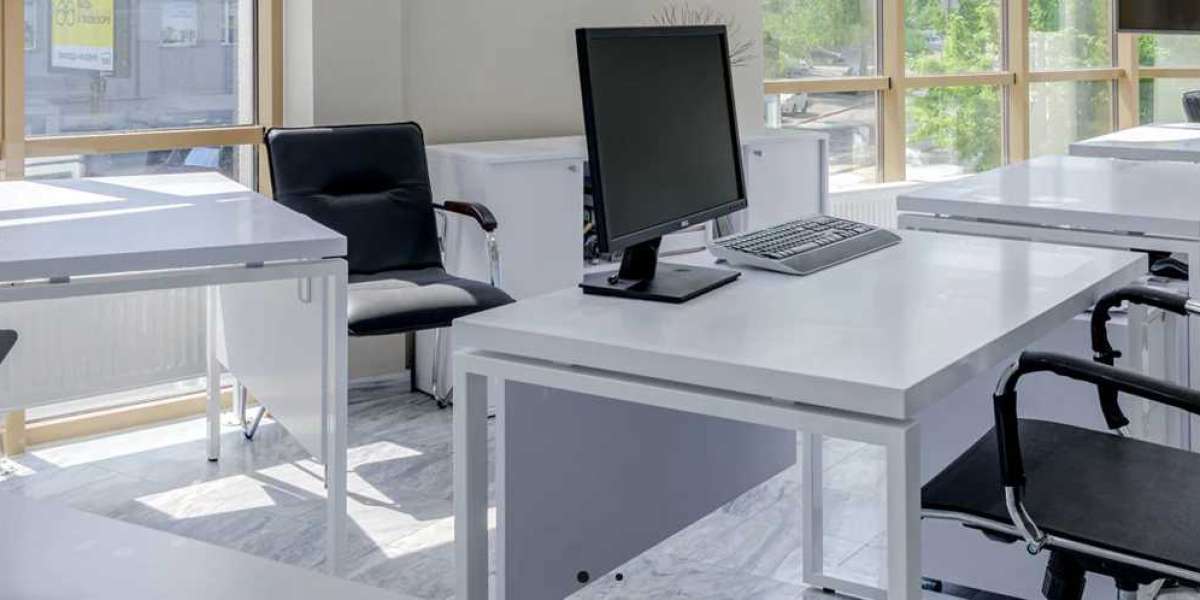Designing collaborative spaces within an office environment is essential for fostering teamwork, creativity, and communication among employees. The right office furniture plays a critical role in creating spaces that encourage collaboration while also accommodating the diverse needs of teams. Here’s how you can design effective collaborative spaces using office furniture:
1. Open and Flexible Layouts
- Modular Furniture: Modular furniture pieces, such as desks and seating that can be easily reconfigured, allow teams to adapt the workspace to their current needs. This flexibility is crucial for fostering collaboration as it enables quick transitions between different working styles, from individual work to group brainstorming sessions.
- Mobile Furniture: Furniture on wheels, such as rolling tables and chairs, allows for easy reconfiguration of the space. Teams can quickly rearrange their work environment to suit the task at hand, whether it's a quick meeting, a collaborative project, or a presentation.
2. Collaborative Workstations
- Bench Desks: Long bench-style desks can accommodate multiple team members, promoting an open and collaborative environment. These desks encourage interaction and communication among team members while providing ample workspace for each individual.
- Shared Work Tables: Large tables designed for group work are ideal for collaborative spaces. These tables allow multiple team members to work together, share ideas, and easily access shared resources like documents or digital tools.
3. Breakout Areas
- Soft Seating Zones: Comfortable seating areas with sofas, lounge chairs, and coffee tables provide informal settings where team members can gather for discussions. These breakout areas are perfect for brainstorming sessions, casual meetings, or quick catch-ups.
- Acoustic Pods: Acoustic pods or booths offer semi-private spaces within open office environments. These pods are ideal for small group collaborations, providing a quiet area where teams can focus without being disturbed by the surrounding noise.
4. Standing Meeting Spaces
- Standing Desks and Tables: Incorporating standing desks or high tables into collaborative areas encourages movement and active participation. These setups are perfect for quick stand-up meetings, brainstorming sessions, or any activity that benefits from a more dynamic and energetic environment.
- Whiteboard Tables: Tables with whiteboard surfaces allow team members to jot down ideas, draw diagrams, and visualize concepts directly on the table, making it easier to collaborate and share ideas in real-time.
5. Technology-Integrated Furniture
- Tech-Enabled Conference Tables: Conference tables with built-in power outlets, USB ports, and wireless charging stations ensure that all necessary technology is easily accessible during meetings. These tables also often include integrated screens or mounts for video conferencing, enhancing the collaborative experience.
- Smart Furniture: Furniture with integrated technology, such as interactive whiteboards or screens, can facilitate virtual collaboration with remote team members. These smart solutions help bridge the gap between in-office and remote workers, ensuring everyone can participate equally.
6. Private Collaboration Spaces
- Focus Rooms: Small, enclosed rooms equipped with collaborative furniture like small tables and comfortable chairs provide a private space for teams to work without distractions. These rooms are ideal for intensive project work, confidential discussions, or deep focus sessions.
- Meeting Pods: Meeting pods offer an isolated space within an open office, where small teams can collaborate without noise interference. These pods often come with built-in seating, tables, and screens, creating a compact yet effective collaborative environment.
7. Ergonomic Solutions
- Ergonomic Chairs: Providing comfortable, ergonomic chairs in collaborative spaces ensures that team members can focus on their work without discomfort. Adjustable chairs that support various postures are particularly beneficial in spaces where employees might spend extended periods collaborating.
- Adjustable Desks: Height-adjustable desks cater to different working styles and preferences, allowing team members to choose whether to sit or stand while collaborating. This flexibility can improve comfort and productivity during teamwork sessions.
8. Creative Zones
- Brainstorming Stations: Designated areas equipped with whiteboards, corkboards, or magnetic walls encourage spontaneous idea generation. These stations can be placed near collaborative spaces to support brainstorming sessions, with seating arrangements that promote easy movement and interaction.
- Creative Corners: Spaces with unconventional seating options, such as bean bags, hammocks, or low stools, can stimulate creativity by providing a more relaxed and informal environment. These corners are perfect for informal team meetings or ideation sessions.
9. Storage Solutions
- Shared Storage Units: Collaborative spaces often require shared resources like documents, office supplies, or technology. Incorporating communal storage units that are easily accessible to everyone ensures that these resources are readily available when needed.
- Mobile Storage Carts: Carts that can be moved around the office provide flexible storage solutions. These carts can hold everything from project materials to tech equipment, making them ideal for dynamic, collaborative environments.
10. Branding and Personalization
- Customizable Furniture: Furniture that can be personalized or branded with company colors, logos, or team names helps reinforce the company culture and identity within collaborative spaces. This can boost team spirit and make the spaces more engaging and inviting.
- Inspirational Decor: Adding elements like motivational quotes, artwork, or team achievements to collaborative areas can inspire creativity and foster a sense of pride and belonging among team members.
Conclusion
Designing collaborative spaces with the right office furniture is essential for creating an environment that fosters teamwork, creativity, and communication. By incorporating flexible, comfortable, and technology-integrated furniture solutions, you can create spaces that not only support collaboration but also adapt to the evolving needs of your teams. Whether you’re working with a large open office or a compact space, these furniture ideas can help you design an environment that enhances teamwork and drives success.








